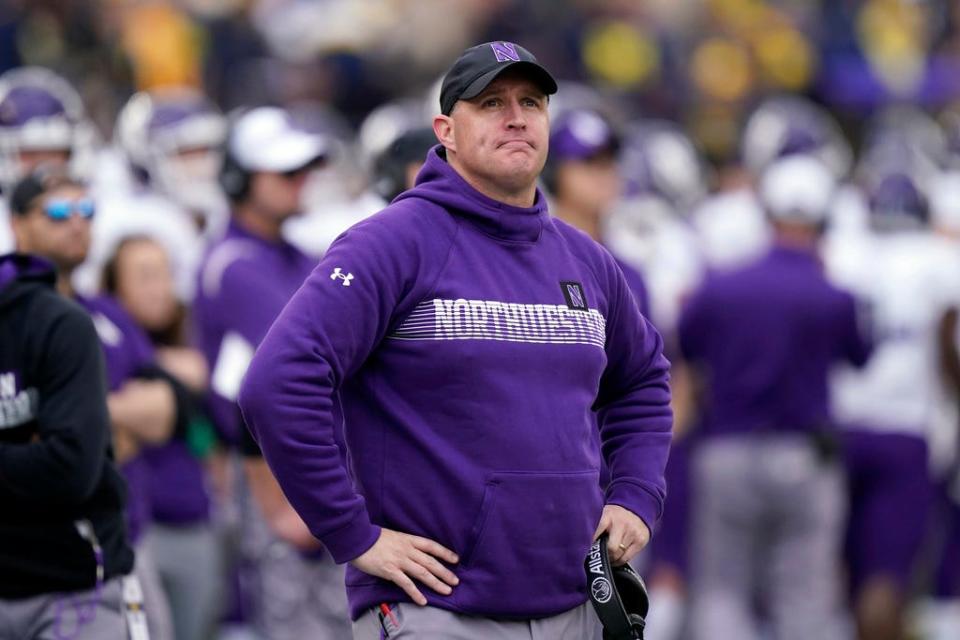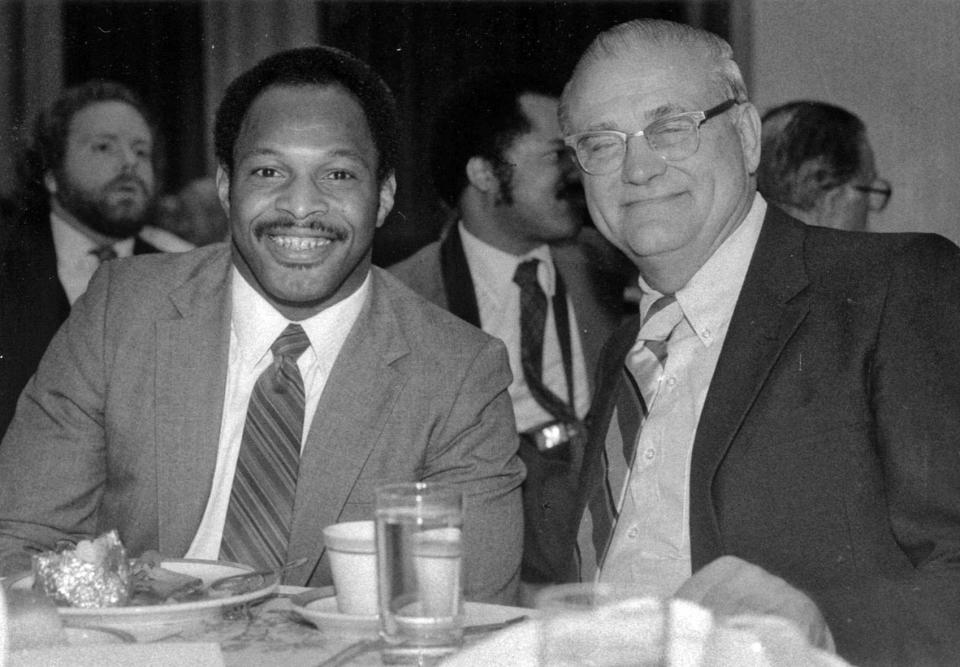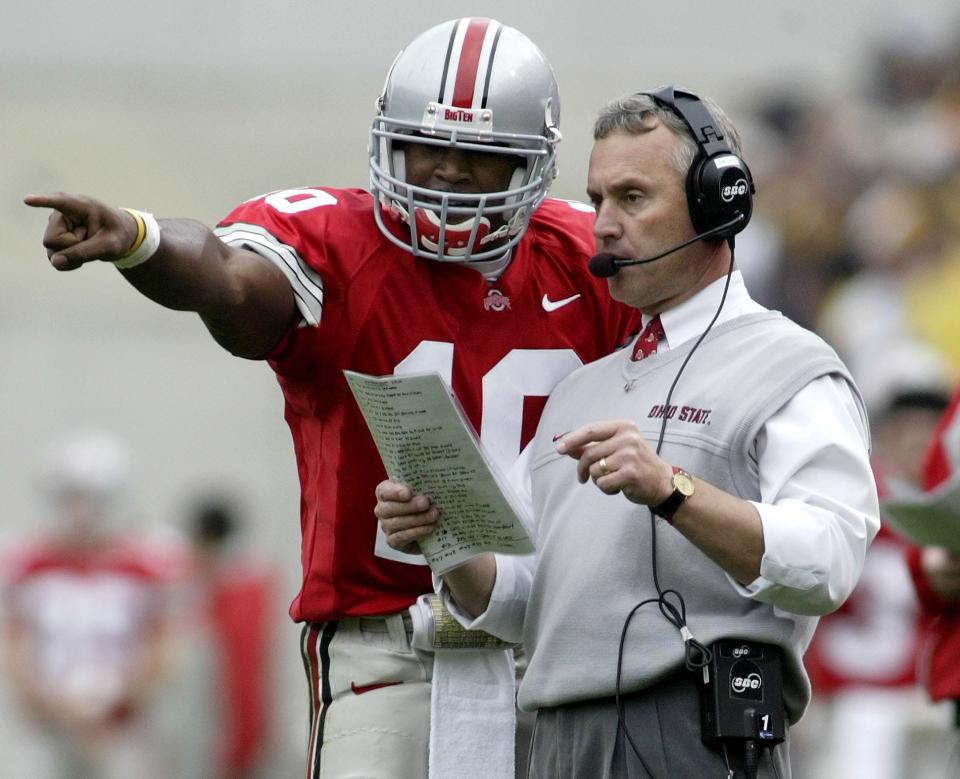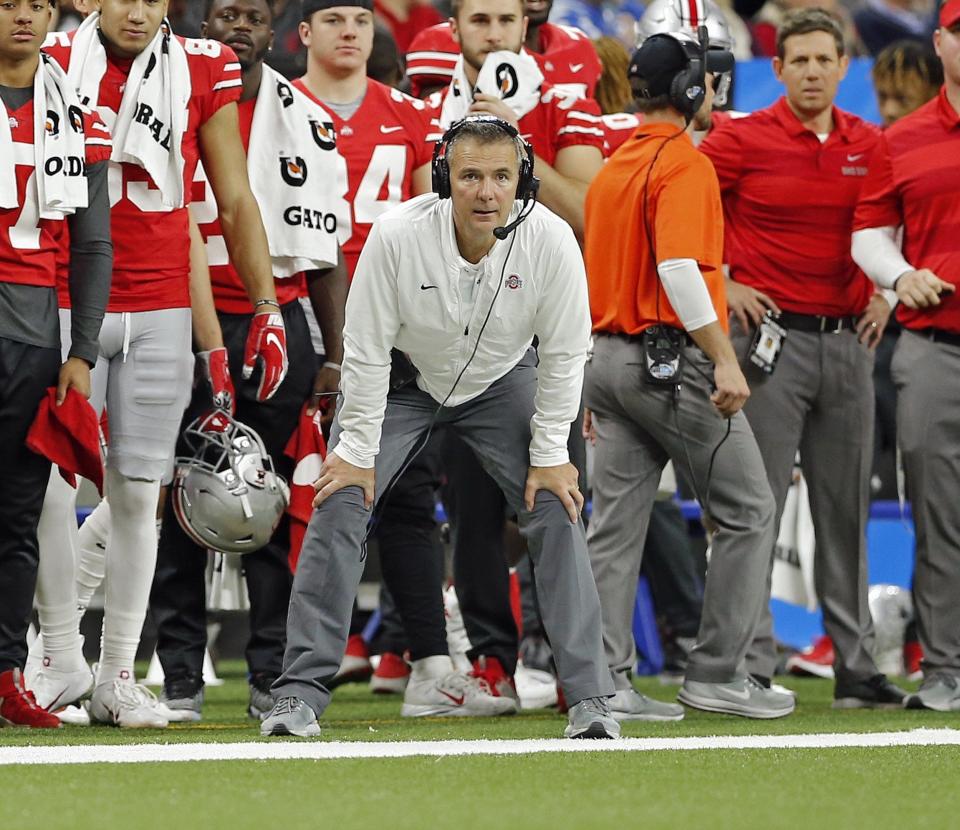Oller: Time to put term limits on college coaches? Earlier exits would solve power issues
Pat Fitzgerald’s 17-year run at his alma mater did not end well. The now former Northwestern football coach stumbled across the finish line, fired Monday in the wake of a sexualized hazing scandal inside the program.
Surprising? Yes, but probably shouldn’t be. The 48-year-old with the military haircut and old-school mentality joins the list of long-established coaches whose careers ended in controversy and chaos. Like them, Fitzgerald was so embedded into the football program that he became ingrown. When that happens, when a coach considers himself safely entrenched, and when staff and administration begin to worship him, well, can you say Joe Paterno? Or, closer to home, Woody Hayes. Jim Tressel. Urban Meyer.

On the surface, Fitz’s fall from grace seems shocking. He famously fit the coach-as-father-figure narrative, caring for players as if they were his sons. The former Wildcats linebacker also filled the role of stand-up leader who did things the right way. But look closer and cracks appear.
Watching Fitzgerald’s career from start to finish, some say over the past five years he began to believe his own media guide bio; heavy on hype, light on accountability. As the years rolled along he began to think himself untouchable, perhaps even all-powerful.
Thirst for control without proper boundaries is nothing new for college football and basketball coaches, especially those established at one school for years. Their attitude too often becomes dismissive, as in “There is nothing to see here, because I said so.”

But stubborn pride and an overinflated ego that leads to lack of transparency are mere symptoms of the real issue.
The reason things go south for veteran coaches such as Fitzgerald has more to do with time than temperament. They stay too long. Or their school keeps them too long, which appears to be what happened at Northwestern. More time in charge meant Fitz wielded more power. And unbridled power typically ends in pain. For one and all.
Seeds of destruction are not automatically sown into every coach who has a statue outside the stadium. Over 16 seasons at Alabama, Nick Saban so far has avoided the kind of crippling scandal that topples legends. But the fuse is always waiting to be lit.
The match strike at Northwestern was a whistleblower revealing allegations of sexually-oriented hazing that led to a six-month school investigation, which left enough unanswered questions that the student newspaper went “Hmmm” and began poking around. The poking led to prodding, which led to where we are today, with Fitzgerald fighting his dismissal on legal grounds.

The hazing could have been avoided. Wrong choices were made. Behavior was enabled. But again, those choices and enabling were impacted by the realities of time chipping away at good character.
In the coaching offices of Evanston, Illinois, two time-based formulas blended into fruition. One was Murphy’s Law, where anything that can go wrong, eventually will. The other was “infinite monkey theorem,” which posits that put monkey at a keyboard long enough and eventually just by chance it will type out the complete works of Shakespeare. Add a pinch of entropy, mixed with plenty of error in judgment, and there you have it: the longer a coach remains at the same place, the better chance some good but a lot of bad things will happen.
Paterno was fine until he wasn’t. After 45 seasons calling the shots at Penn State, JoePa got called on the phone and told he was being dismissed. The school’s board of trustees determined Paterno did not do enough to stop the sexual assault crimes of PSU assistant coach Jerry Sandusky.
Some think Paterno intentionally looked the other way – the old plausible deniability play – for fear his program would be burned to the ground if Sandusky’s crimes came to light. If true, shame on him. And of course “We Are” burned anyway.
Hayes won enough games over 28 seasons at Ohio State to tamp down criticism over his temper tantrums, until he went one punch too far. Tressel lied to the NCAA, putting his definition of protecting players/program ahead of NCAA bylaws. He was forced out after 10 seasons in Columbus. Given keys to the OSU kingdom, Meyer eventually locked himself out, done in by poor choices involving an assistant coach. He “retired” after seven seasons, then took his “I’m-in-charge” attitude to the NFL, where it dead-ended in disaster. NFL owners, unlike politically-motivated school presidents, don’t take kindly to being told to stay in their lanes.

College coaches who feel the sting of dismissal like to blame everyone but themselves for the hatchet job that happened to their necks. Media was unfair. Administration was unsupportive. Fans were unrealistic. All of that is true sometimes. And some of it is true all the time.
But for coaches who spend a decade or more at the same school, the biggest enemy is longevity. The longer a coach remains at one place, the more he feels wanted. The more he feels wanted, the more he feels entitled. The more he feels entitled, the more he feels empowered. And the more he feels empowered, the more he covets total control, which corrupts.
My solution? Term limits. Ten years at one school and it’s time to part company. An amicable split for both sides. A fresh start on both ends. This can’t become a rule, of course. More like sage advice.
After a decade, both coach and school need a reset. The coach needs a new challenge. The school needs a re-energized coach not yet comfortable enough in his surroundings to demand complete control; one who is careful to play by other’s rules. A coach who understands what the great Paul Brown meant when he preached that everyone is important, but no one is essential.
Ten years is enough. Within 10 years, Woody won two national titles at Ohio State. Tress and Urban each collected one. Ryan Day would get six more seasons to get it done.
Yes, recruiting becomes an issue. Hard to convince a kid to join your program when he knows you won’t be there a year or two from now. But at least this way he knows the deal up front. Plus, if it’s true what coaches preach, that recruiting decisions should be made based on school and program, not coach, then both school and program will be healthier by not having the same coach in place for more than a decade.
Dysfunction worsens over time. Just ask Northwestern, where the monkey just typed out Hamlet.
Get more Ohio State football news by listening to our podcasts
This article originally appeared on The Columbus Dispatch: Time not on side of fired Northwestern football coach Pat Fitzgerald

